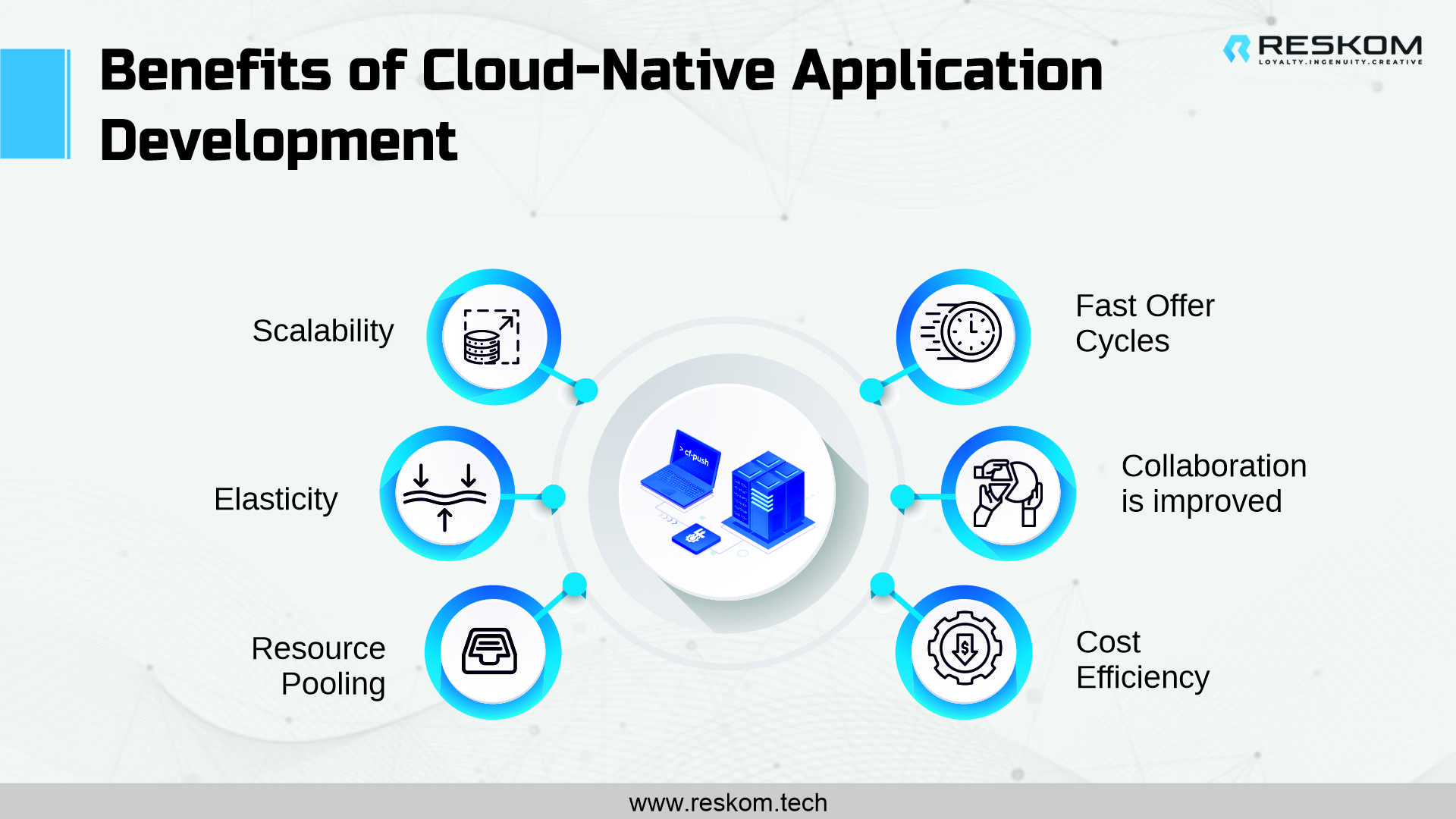The growing demand for scalable and agile software has given rise to cloud-native application development. This technique, often known as “born in the cloud,” incorporates a variety of software development approaches such as agile, microservices, containerization, and DevOps. In this post, we’ll look at the fundamental ideas, important components, and best practices for developing cloud-native applications, as well as the numerous benefits they provide.

Key Principles of Cloud-Native Development
The cloud-native development process is built upon four key principles that underpin its success:
- Microservices Architecture: Swiftness and flexibility are key considerations in the development of cloud-native apps. Achieving these objectives requires the use of microservices architecture. It entails dissecting more complex applications into a collection of discrete parts or modular services. This technique offers several advantages over monolithic architecture, including the ability to execute and update individual microservices independently of one another. It is more adaptable and efficient since it decreases the time required to roll out new features and eliminates the need to deploy the entire application code.
- Containerization: Containerization is the process of packaging and isolating programs using software containers so they may function separately from physical resources. This methodology streamlines the deployment and administration of applications while guaranteeing uniform performance in various settings.
- Continuous Delivery and Integration (CD/CI): Through the use of continuous delivery and integration, or CD/CI, software testing teams are able to test smaller code bases throughout continuous release cycles. By streamlining the development process, this technique enables upgrades and enhancements to happen more quickly and reliably.
- DevOps Methodology: DevOps promotes cooperation between the development and operations teams by automating the application lifecycle. DevOps streamlines the development cycle and breaks down silos to shorten deployment times and increase overall productivity.
Core Elements of Cloud-Native Applications
Cloud-native applications are composed of five core elements that must be integrated seamlessly:
- Application Design: Cloud-native applications are designed for rapid delivery and iterations. This design is based on microservices architecture, enabling flexibility and adaptability. Microservices communicate with different services using RESTful APIs, making it easier for external service callers to interact with the cloud-native apps.
- DevOps: DevOps is a critical element that breaks down the barriers between the development and production stages, ensuring faster deployment and implementation. Techniques like value chain mapping (VCM) optimize each “silo” within the development cycle and automate tasks without disrupting other groups.
- Operational Design: Unlike monolithic architecture, cloud-native apps simplify operational design through microservices. Code modifications are limited to individual executables, making it easier to implement changes, recreate production environments, and maintain operational efficiency.
- Quality Assurance (QA): QA and testing play a crucial role in the cloud-native app development process. With QA performed at an earlier stage, developers take responsibility for testing new functionalities, while QA teams focus on integration testing, performance testing, and multi-device testing.
Best Practices in Cloud-Native Development
By adhering to best practices that direct app development and performance evaluation, cloud-native development may be completed efficiently. Five such excellent practices are as follows:
- Automate Provisioning: By utilizing Infrastructure-as-Code (IaC) services, you may automate the provisioning of cloud-native apps from a variety of well-known cloud suppliers. Automation expedites the development process and aids in keeping track of code changes.
- Monitoring: Cloud-native development environments make it easy to monitor applications and their underlying architecture. Monitoring is essential for ensuring the health and performance of cloud-native applications.
- Documentation: Document changes made by multiple development teams and their contributions to the cloud-native application. This helps maintain transparency and enhances collaboration among team members.
- Incremental Changes: Make incremental changes that are easy to reverse and not permanent. This practice allows development teams to learn from their coding mistakes and make improvements iteratively.
- Design for Failures: Use testing frameworks that simulate failures and improve the application’s ability to handle unexpected issues. Designing for failures is a fundamental aspect of cloud-native development.
Benefits of Cloud-Native Application Development
Cloud-native application development has several advantages, making it an appealing option for enterprises seeking to remain competitive in the digital era:
- Scalability: Cloud-native apps are designed to grow quickly and effectively. They can adjust to shifting workloads, guaranteeing peak performance even during peak demand periods.
- Elasticity: Cloud-native apps are designed to leverage cloud resources for dynamic scaling. This elasticity allows organizations to adjust their resource consumption as needed, optimizing costs and performance.
- Resource Pooling: Cloud-native apps make effective use of cloud resource pooling. They share resources, ensuring efficient utilization and reducing waste.
- Fast offer Cycles: Cloud-native development techniques enable enterprises to offer new features and upgrades to customers more often, resulting in faster release cycles.
- Collaboration is improved: because to DevOps approaches, which promote communication between development and operations teams. This cuts down on bottlenecks and boosts productivity.
- Cost Efficiency: Since cloud-native apps only charge for the resources they use, they may help businesses save money by optimizing resource utilization.
Conclusion
The emergence of cloud-native applications has transformed the landscape of software development. By embracing the fundamental principles, elements, and best practices of cloud-native development, businesses can create applications that are not only cost-effective and efficient but also adaptable and scalable. The advantages of cloud-native development, including resource optimization, flexibility, scalability, and enhanced collaboration, position it as the ideal choice for enterprises looking to excel in the dynamic world of cloud computing. Prepare your applications for the cloud and maintain a competitive edge in the ever-evolving digital era by adopting a cloud-native and microservices architecture.
RESKOM, a leading cloud-native development service provider, empowers businesses to harness the full potential of cloud-native applications. With a team of expert developers, RESKOM implements best practices in cloud-native development, enabling clients to create highly scalable, agile, and cost-efficient applications that leverage the wbenefits of the cloud.


